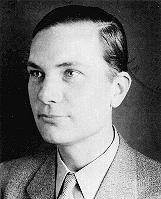You searched for: world war I
<< Previous | Displaying results 376-400 of 538 for "world war I" | Next >>
-
Writing the News
ArticleShortly after taking power in January 1933, Adolf Hitler and the Nazis took control of German newspapers, detailing how the news was to be reported.

-
Aron (Dereczynski) Derman describes events that took place upon the German invasion of Slonim, Poland
Oral HistoryAron was born to a middle-class Jewish family in Slonim, a part of Poland between the two world wars. His parents owned a clothing store. After studying in a technical school, Aron worked as a motion-picture projectionist in a small town near Slonim. The Soviet army took over Slonim in September 1939. War broke out between Germany and the Soviet Union in June 1941. Aron returned to Slonim. The Germans soon occupied Slonim, and later forced the Jews into a ghetto. Aron was forced to work in an armaments…
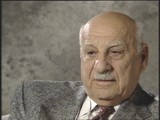
-
The United States and the Nazi Threat: 1933–37
ArticleLearn about responses in the United States to reports about Nazi anti-Jewish policies and violence against Jews from 1933–37.
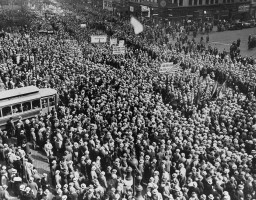
-
Battle for Danzig
FilmThe Treaty of Versailles, imposed on defeated Germany following World War I, declared Danzig to be a free city jointly administered by Poland and the League of Nations. Germany bitterly resented the loss of this largely German city, which was also an important port on the Baltic Sea. The return of Danzig became a central feature of Adolf Hitler's foreign policy. This footage shows pro-German forces besieging a Polish garrison in Danzig's main post office. Germany annexed Danzig after the defeat of Poland…
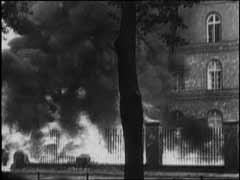
-
Aftermath of battle in Danzig
FilmThe Treaty of Versailles, imposed on Germany following its defeat in World War I, declared Danzig to be a free city jointly administered by Poland and the League of Nations. Germany bitterly resented the loss of this largely German city, which was also an important port on the Baltic Sea. The return of Danzig to Germany became a central focus of Adolf Hitler's foreign policy. Germany invaded Poland in September 1939. After the invasion of Poland, Germany unilaterally annexed Danzig. This German newsreel…
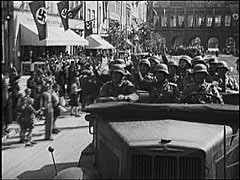
-
Boycott of Jewish Businesses
ArticleThe April 1, 1933, boycott of Jewish-owned businesses marked the beginning of a nationwide campaign by the Nazi Party against the entire German Jewish population.
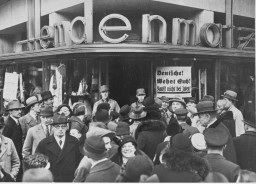
-
The Wannsee Conference and the "Final Solution"
ArticleThe Wannsee Conference was a high-level meeting of Nazi Party and German State officials to coordinate “the Final Solution of the Jewish Question.” Learn more.

-
Wilek (William) Loew describes the roundup of Jews during August 1942 deportation from Lvov to Belzec
Oral HistoryWilek was the son of Jewish parents living in the southeastern Polish town of Lvov. His family owned and operated a winery that had been in family hands since 1870. Wilek's father died of a heart attack in 1929. Wilek entered secondary school in 1939. Soon after he began school, World War II began with the German invasion of Poland. Lvov was in the part of eastern Poland annexed by the Soviet Union. Although the Soviets took over Wilek's home and the family business, Wilek was able to continue his…

-
Wilek (William) Loew describes political prison in Budapest after the Germans arrested him as a Polish spy
Oral HistoryWilek was the son of Jewish parents living in the southeastern Polish town of Lvov. His family owned and operated a winery that had been in family hands since 1870. Wilek's father died of a heart attack in 1929. Wilek entered secondary school in 1939. Soon after he began school, World War II began with the German invasion of Poland. Lvov was in the part of eastern Poland annexed by the Soviet Union. Although the Soviets took over Wilek's home and the family business, Wilek was able to continue his…
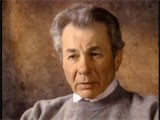
-
Wilhelm Kusserow
ID CardBorn at the beginning of World War I, Wilhelm was patriotically named after Germany's emperor, Wilhelm II. The eldest son, Wilhelm was raised a Lutheran, but after the war his parents became Jehovah's Witnesses and raised their children according to their faith. After 1931, their home in the rustic town of Bad Lippspringe became known as a center of Jehovah's Witness activity. 1933-39: The Kusserows were under close scrutiny by the Nazi police because Witnesses believed that their highest loyalty was to…

-
Charlene Schiff describes being caught while trying to smuggle food into the Horochow ghetto
Oral HistoryBoth of Charlene's parents were local Jewish community leaders, and the family was active in community life. Charlene's father was a professor of philosophy at the State University of Lvov. World War II began with the German invasion of Poland on September 1, 1939. Charlene's town was in the part of eastern Poland occupied by the Soviet Union under the German-Soviet Pact of August 1939. Under the Soviet occupation, the family remained in its home and Charlene's father continued to teach. The Germans…
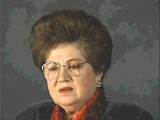
-
Brigitte Friedmann Altman describes a roundup of children in the Kovno ghetto in March 1944
Oral HistoryWorld War II began in September 1939. Brigitte and her family moved to Kovno, hoping to secure visas and passports for travel to North America. In July 1941, Brigitte and her family were forced to move into the Kovno ghetto after the Germans occupied Lithuania. Brigitte's family survived the "Great Action," but her mother died of illness in the ghetto. After a roundup targeting children in March 1944, Brigitte escaped from the ghetto with the help of a former employee of her father. Soviet forces liberated…
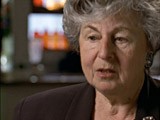
-
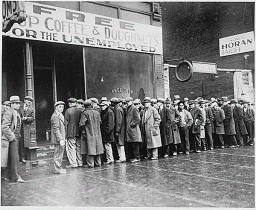
-
Miriam Peleg describes why she joined Żegota
Oral HistoryMiriam Peleg (1913–1996) was a member of the Council for Aid to Jews, codenamed “Żegota.” Żegota was a clandestine rescue organization of Poles and Jews in German-occupied Poland. Supported by the Polish government-in-exile, Żegota coordinated efforts to save Jews from Nazi persecution and murder. It operated from 1942 to 1945. Born Maria Hochberg, Miriam was from a Polish-Jewish family. She grew up in a small town about 70 miles east of Kraków. As early as the summer of 1940, Miriam obtained…

-
Charlene Schiff describes escaping from the Horochow ghetto
Oral HistoryBoth of Charlene's parents were local Jewish community leaders, and the family was active in community life. Charlene's father was a professor of philosophy at the State University of Lvov. World War II began with the German invasion of Poland on September 1, 1939. Charlene's town was in the part of eastern Poland occupied by the Soviet Union under the German-Soviet Pact of August 1939. Under the Soviet occupation, the family remained in its home and Charlene's father continued to teach. The Germans…
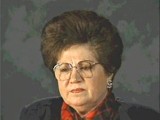
-
Wilek (William) Loew describes the hiding place in which his mother survived an Aktion in Lvov
Oral HistoryWilek was the son of Jewish parents living in the southeastern Polish town of Lvov. His family owned and operated a winery that had been in family hands since 1870. Wilek's father died of a heart attack in 1929. Wilek entered secondary school in 1939. Soon after he began school, World War II began with the German invasion of Poland. Lvov was in the part of eastern Poland annexed by the Soviet Union. Although the Soviets took over Wilek's home and the family business, Wilek was able to continue his…

-
Nazi Party Platform
ArticleThe Nazi Party Platform was a 25-point program for the creation of a Nazi state and society. Hitler presented it at the Hofbräuhaus Beerhall in Munich in February 1920.

-
The Nazi Camp System: Terminology
ArticleWhat is the difference between a “concentration camp” and a “killing center”? Learn about the history of these terms and what they meant in the context of Nazi oppression and murder.
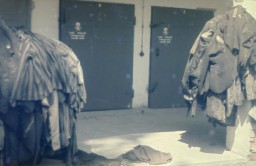
-
Robert Ritter
ArticleRobert Ritter was a German doctor whose work helped drive the development of the Nazi regime’s anti-Romani policies of persecution and genocide.

-
Charlene Schiff describes forced labor in the Horochow ghetto
Oral HistoryBoth of Charlene's parents were local Jewish community leaders, and the family was active in community life. Charlene's father was a professor of philosophy at the State University of Lvov. World War II began with the German invasion of Poland on September 1, 1939. Charlene's town was in the part of eastern Poland occupied by the Soviet Union under the German-Soviet Pact of August 1939. Under the Soviet occupation, the family remained in its home and Charlene's father continued to teach. The Germans…

-
Irena Sendler describes how she was arrested and tortured by the Gestapo
Oral HistoryIrena Sendler (1910–2008) was a member of the Council for Aid to Jews, codenamed “Żegota.” Żegota was a clandestine rescue organization of Poles and Jews in German-occupied Poland. Supported by the Polish government-in-exile, Żegota coordinated efforts to save Jews from Nazi persecution and murder. It operated from 1942 to 1945. Irena Sendler (Sendlerowa) was working as a social worker in Warsaw when World War II broke out in 1939. After the Nazis forced Warsaw’s Jews to move into the ghetto…
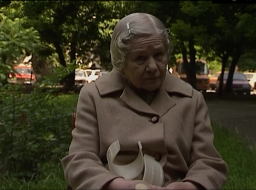
-
Abdol Hossein Sardari (1895–1981)
ArticleIranian diplomat Abdol Hossein Sardari gave critical assistance to Iranian Jews in occupied France (1940-1944) to protect them from Nazi persecution.
-
Julien Bryan
ArticleUS filmmaker and photographer Julien Bryan was one of the few western photographers left in Warsaw upon the German invasion of Poland in September 1939.
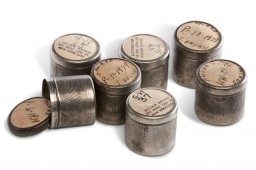
-
Antisemitism
ArticleThroughout history Jews have faced prejudice and discrimination, known as antisemitism. Learn more about the long history of antisemitism.
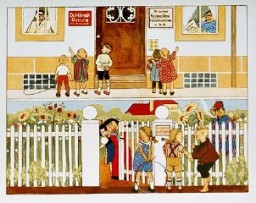
-
Friedrich-Paul von Groszheim
ID CardFriedrich-Paul was born in the old trading city of Lübeck in northern Germany. He was 11 when his father was killed in World War I. After his mother died, he and his sister Ina were raised by two elderly aunts. After graduating from school, Friedrich-Paul trained to be a merchant. 1933-39: In January 1937 the SS arrested 230 men in Lübeck under the Nazi-revised criminal code's Paragraph 175, which banned sexual relations between men. Friedrich-Paul was imprisoned for 10 months. In 1938 he was…
